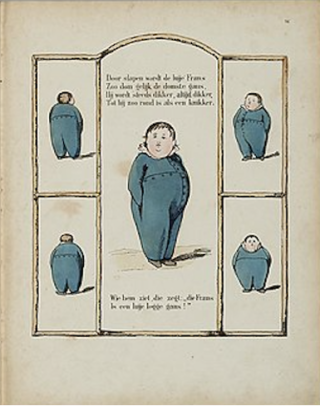Diet
What Is the Concept of 'Pound-Years'?
Exposing the body to years of excess fat can take its toll.
Posted April 30, 2023 Reviewed by Abigail Fagan
Key points
- Excess fat in children and adolescents has serious psychological and medical consequences.
- “Pound-years,” analogous to “pack-years” in smokers, refers to the amount of excess fat multiplied by the cumulative years of exposure.
- Long-term studies suggest that with increasing pound-years of exposure, the heart and other organs can suffer increased structural damage.

We first meet J. K. Rowlings' nasty Dudley Dursley as he throws his cereal at the wall. Dudley, who hates exercise and is prone to temper tantrums, is “very fat” and, in fact, "four times the size of his cousin” Harry Potter, whom he persistently torments when Harry comes to live with his muggle relatives (1980).
And poor bespectacled Piggy, the most intelligent of the shipwrecked boys, is teased and ultimately savagely killed in William Golding’s classic fable Lord of the Flies (1954).
Describing them as bullies or bullied, literature has not been kind to fat children.

Fat children do not fare that well in reality either. The emotional social stigma involved in being fat is so pervasive that some in the "body activism" movement recommend not using the word obesity and not "medicalizing" obesity by referring to it as a disease (Marcus et al, 2022).
But the more we learn of the significant physical morbidities, such as hypertension, type 2 diabetes, and other metabolic abnormalities associated with chronic overweight and obesity, the more we should be concerned and not ignore when children develop excess fat during childhood and maintain the fat into adulthood.

By statistics from the 2017-2018 National Health and Nutrition Examination Survey (NHANES), for those aged 2 to 19, the prevalence of obesity, defined as at or above the 95th percentile on sex-specific growth charts, is 19.3%, including 6.1% with severe obesity. An additional 16% are overweight (85th to 95th percentile.) Certain populations have even high rates (Fryar et al, 2020; National Institute of Diabetes and Digestive and Kidney Diseases).
Statistics from 2017-2020 (CDC) indicate even greater percentages—19.7% of those 2 to 19-year-olds are obese—14.7 million children and adolescents. These percentages have all increased exponentially since the early 1960s.
Severe obesity, defined by CDC growth charts as 120% of the 95th percentile, is an "escalating problem" that has "increased two-fold" in the last 20 years. It carries a considerable "disease burden" and is the "most prominent clinical risk factor" for type 2 diabetes, including in children as young as 3.5 years (Bendor et al, 2020.) But the effects are not just immediate.
Importantly, in long-term studies, severe obesity in adolescence is associated with adult heart failure (Sweden) and even an increased risk of cancer in adulthood (Israel) (Bendor et al).
It is not just those children and adolescents with severe obesity that warrant concern. In general, exposure to excess fat, in a dose-response relationship (i.e., the greater the excess fat, the worse the consequences) over time, may lead to an increased disease burden.
.JPG.jpg?itok=KQzdP3Fp)
Typically, obese children will remain obese into adulthood (Skelton and Klish, 2023.) Many factors contribute, including the age of onset of obesity, its severity, and obesity in one or both parents. For example, of obese six-year-olds with an obese parent, 50% will remain obese as adults, and among obese adolescents (10-to-14-year-olds), 80% will remain so. Children with severe obesity at age five have a 90% chance of remaining obese into mid-adulthood (Skelton and Klish).
The fascinating concept of pound-years was first delineated in an editorial by Texas researchers Joshi and Hill (2017.) It is analogous to pack-years of smokers, i.e., the number of packs smoked per day (intensity) multiplied by the cumulative number of years of exposure to tobacco (duration) (Lowell et al, 1956; Hummel, 1964; Pleasants et al, 2020; National Cancer Institute, 2023).

Pound-years, then, refers to the amount or "dose," as it were, of obesity multiplied by years of exposure to the excess fat state. Joshi and Hill were responding to results from the long-term Bogalusa Study, with a mean follow-up of 28 years of over 700 adults (Zhang et al, 2017.) This study, which included multiple measurements during childhood and adulthood, concluded "increased childhood BMI has a long-term adverse impact" on the heart (Zhang et al).
Joshi and Hill explain, "With increasing pound-years of exposure, there are important myocardial structural changes" including increased left ventricular mass and hypertrophy that may be associated with ultimate heart failure. In other words, longer exposure to obesity "is an important risk factor for structural mediators of clinical disease" (2017).
Joshi and Hill emphasize they cannot provide direct evidence of underlying mechanisms, and many factors may contribute, but "nevertheless, accumulating data suggest a strong link between obesity and structural changes of the heart," and the longer the exposure, possibly the more detrimental (2017).
Other researchers (Reilly and Kelly, 2011; Twig et al, 2016; Robertson et al, 2019; and Suri et al, 2021) have all noted the long-term consequences of excess weight that develops in children and/or adolescents.

More recently, childhood obesity, in a systematic review of eight prospective cohort studies, has been associated with kidney disorders in adulthood (Pourghazi et al, 2023.) It is likely that the more we study chronic exposure to excess weight over time, the more likely we will find associations with other pathology in a dose-response relationship.
Further, the concept of pound-years, i.e., intensity and duration of exposure—was delineated in the context of child and adolescent obesity. The concept is so important that it is worth applying to those who gain excess weight as adults and maintain that excess weight over the years.
For a more thorough discussion of inferring causation in epidemiological studies, see Rothman (1976) and Rothman and Greenland (2005.) For a heartfelt- memoir of childhood obesity, see Frank Bruni's Born Round: A Story of Family, Food, and a Ferocious Appetite (2010).
References
Bendor CD. (2020). Cardiovascular morbidity, diabetes and cancer risk among children and adolescents with severe obesity. Cardiovascular Diabetology 19: 79 (14 pages.)
Bruni F. (2010) Born Round: A Story of Family, Food, and a Ferocious Appetite. New York: Penguin Reprint.
Centers for Disease Control (CDC): Prevalence of Childhood Obesity in the United States https://www.cdc.gov/obesity/data/childhood.html (retrieved 4/29/23).
Fryar CD, Carroll MD, Afful J. (2020). Prevalence of overweight, obesity, and severe obesity among children and adolescents aged 2–19 years: United States, 1963–1965 through 2017–2018. NCHS. Health E-Stats.
Golding W. (1954). Lord of the Flies. https://www.amazon.com/Lord-Flies-William-Golding-ebook/dp/B09XBDG9JV/ref=sr_1_1?crid=22236CYOEO7TT&keywords=lord+of+the+flies&qid=1682783702&sprefix=lord+of+the+flies%2Caps%2C92&sr=8-1 (Retrieved 4/29/23).
Hummel TJ. (1964). The survival of cigarette smokers. The Journal of Risk and Insurance 31(4): 613-619.
Joshi PH; Hill JA. (2017). ‘Pound-Years:’ Effects on the heart of long-term exposure to obesity (Editorial). Circulation Research 120: 1533-34.
Lowell FC et al (1956). Chronic obstructive pulmonary emphysema: a disease of smokers. Annals of Internal Medicine 45: 268-74.
Marcus C; Danielsson P; Hagman E. (2022). Pediatric obesity—long-term consequences and effect of weight loss. Journal of Internal Medicine 292: 870-891.
National Institute of Diabetes and Digestive and Kidney Diseases: Overweight & Obesity Statistics: https://www.niddk.nih.gov/health-information/health-statistics/overweight-obesity (Retrieved 4/29/23).
National Cancer Institute (NCI). “Pack Year.” (https://www.cancer.gov/search/results?swKeyword=pack+year) (Retrieved 4/29/23).
Pleasants RA et al. (2020). Both duration and pack-years of tobacco smoking should be used for clinical practice and research. Annals of the American Thoracic Society 17(7): 804-806.
Pourghazi F. et al (2023). Association between childhood obesity and later life kidney disorders: a systematic review. Clinical Key. (Article in press.)
Reilly JJ; Kelly J. (2011). Long-term impact of overweight and obesity in childhood and adolescence on morbidity and premature mortality in adulthood: systematic review. International Journal of Obesity (London). 35(7): 891-98.
Robertson J et al. (2019). Higher body mass index in adolescence predicts cardiomyopathy risk in midlife: long-term follow-up among Swedish men. Circulation 140: 117-125.
Rothman KJ. (1976). Reviews and Commentary: Causes. American Journal of Epidemiology 104 (6): 587-592.
Rothman KJ; Greenland S. (2005). Causation and causal inference in epidemiology. American Journal of Public Health 95 (Supplement 1): S144-S150.
Rowling, JK (1980). Harry Potter and the Sorcerer’s Stone. https://read.amazon.com/?asin=B0192CTMYG&ref_=kwl_kr_iv_rec_1. (Retrieved 4/29/23).
Skelton JA; Klish WJ (2023). Definition , epidemiology, and etiology of obesity in children and adolescents. Uptodate.com. (Retrieved 4/30/23.)
Suri M et al (2021). A systematic review of the long-term trajectory of hemodynamics and body composition in childhood obesity. Cureus 13(11): e19504. (10 pages.)
Twig G et al (2016). Body-mass index in 2.3 million adolescents and cardiovascular death in adulthood. The New England Journal of Medicine 374(25): 2430-2440.
Zhang H et al (2017). Long-term excessive body weight and adult left ventricular hypertrophy are linked through later life body size and blood pressure: the Bogalusa Heart Study. Circulation Research 120(10): 1614-1621.




